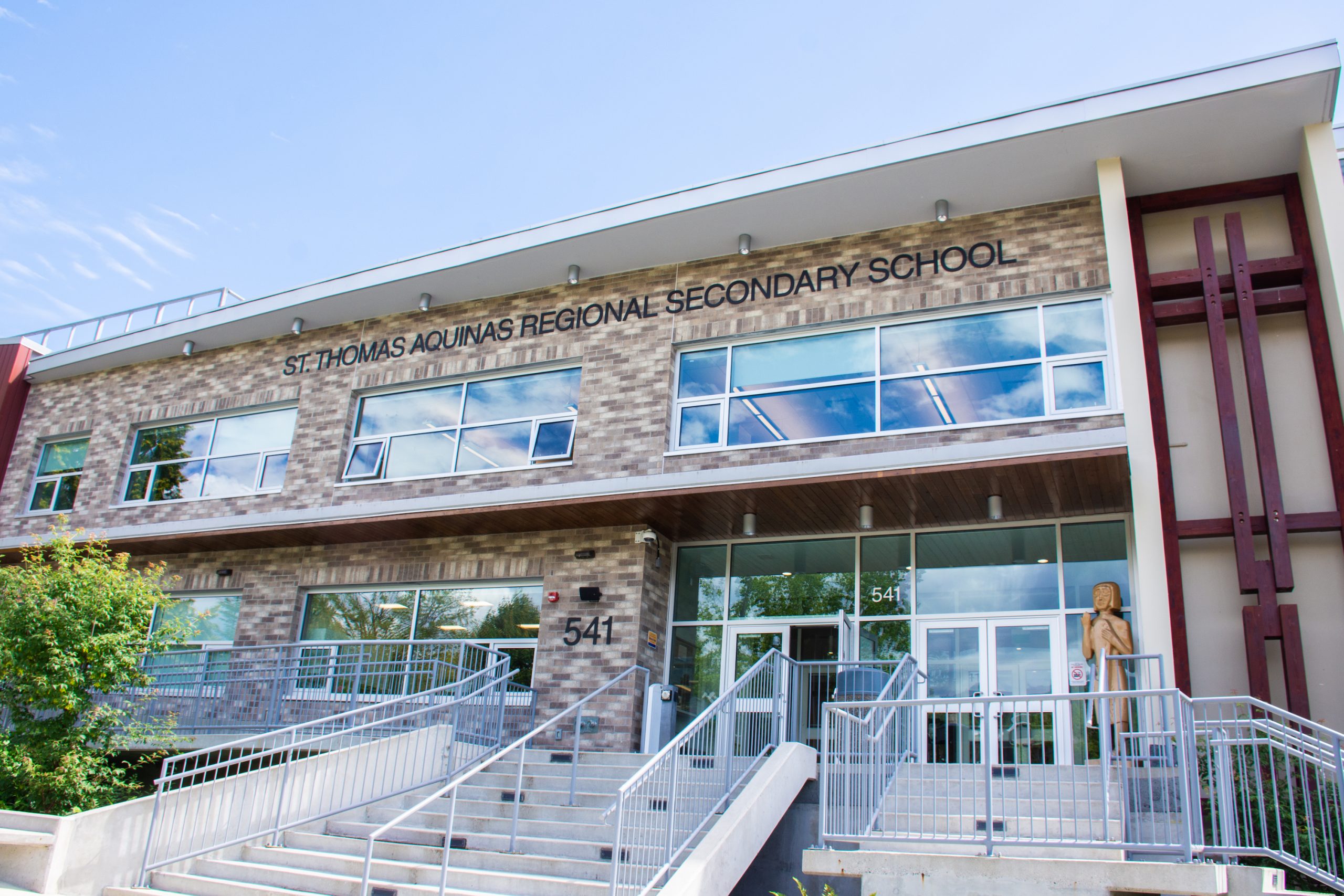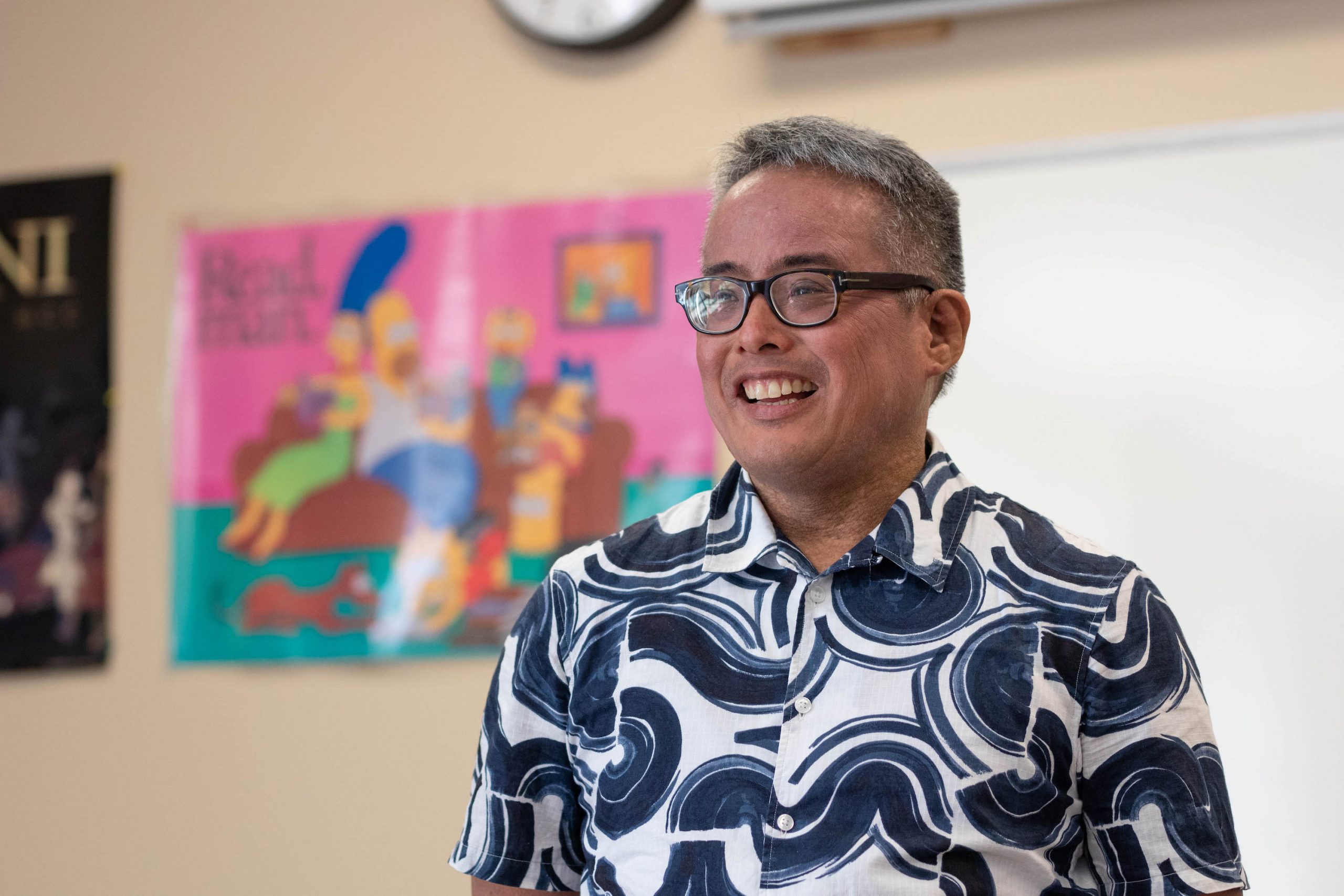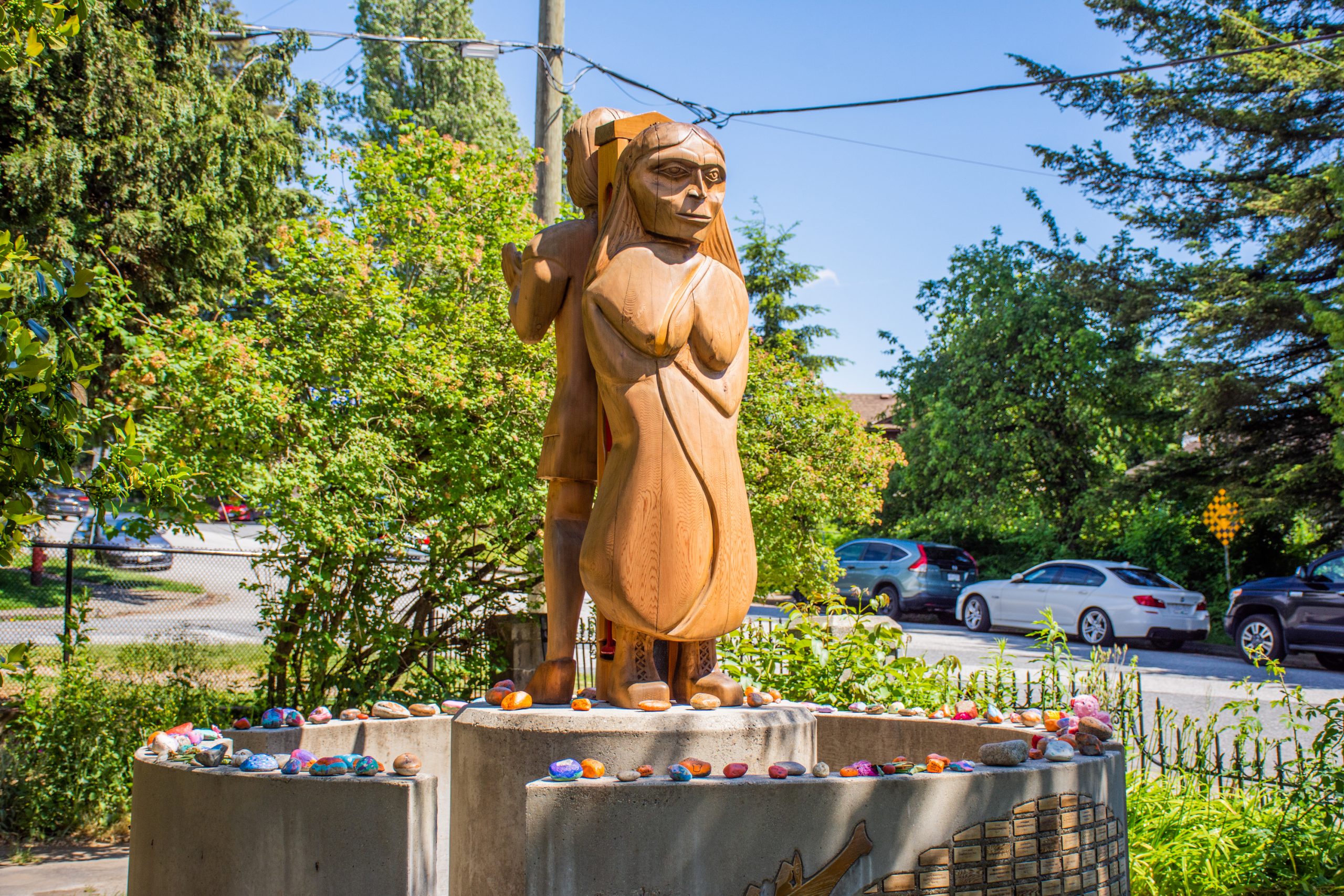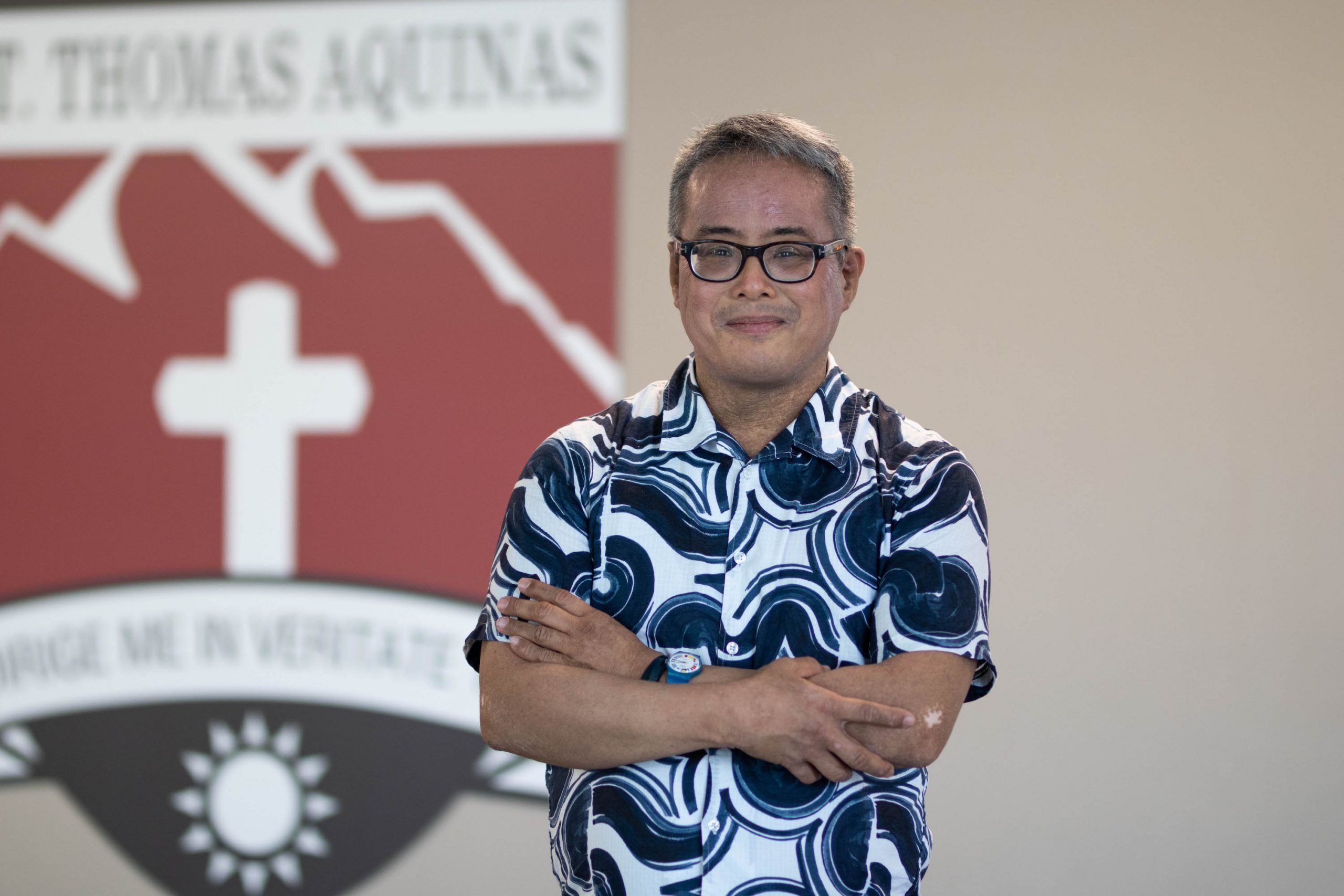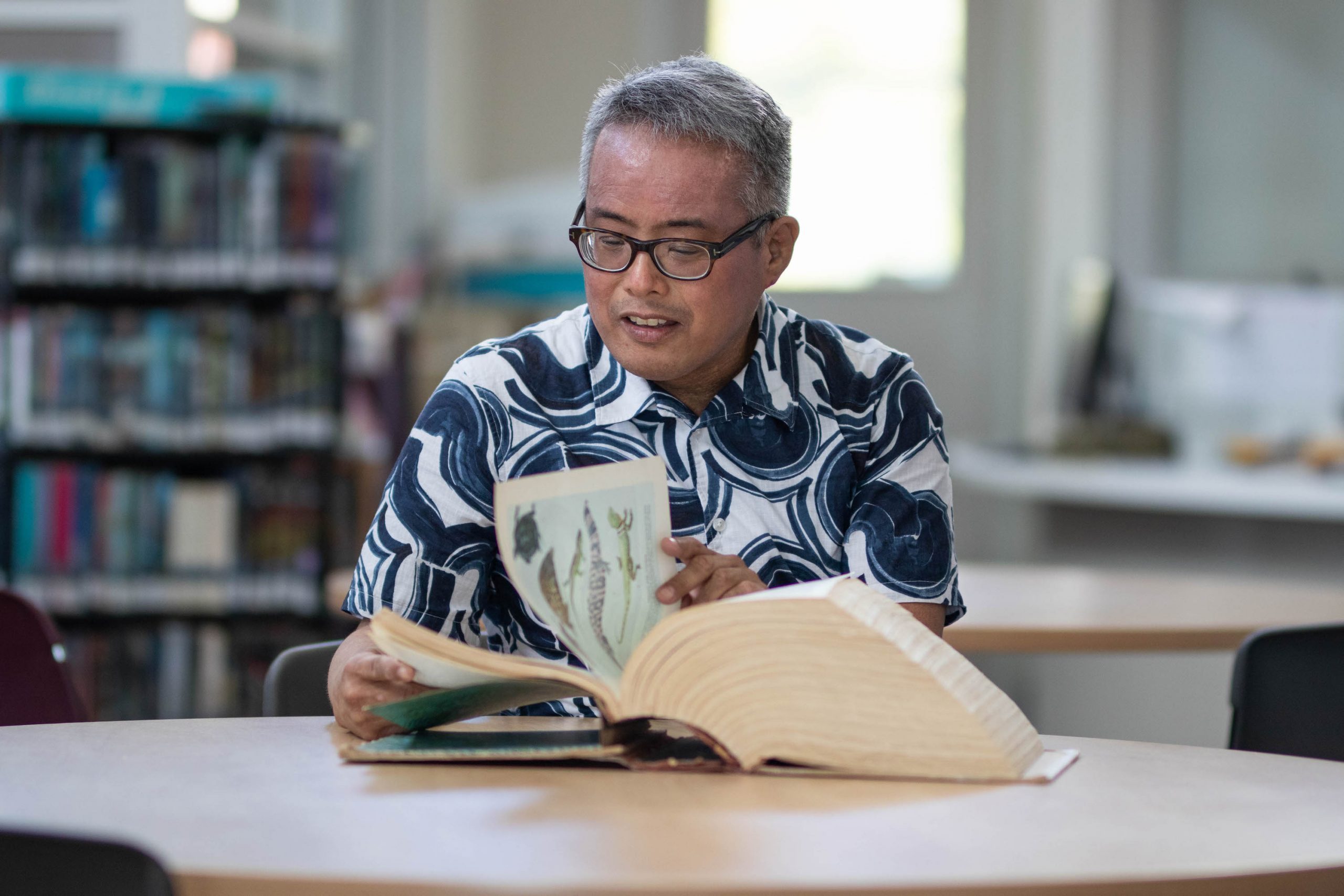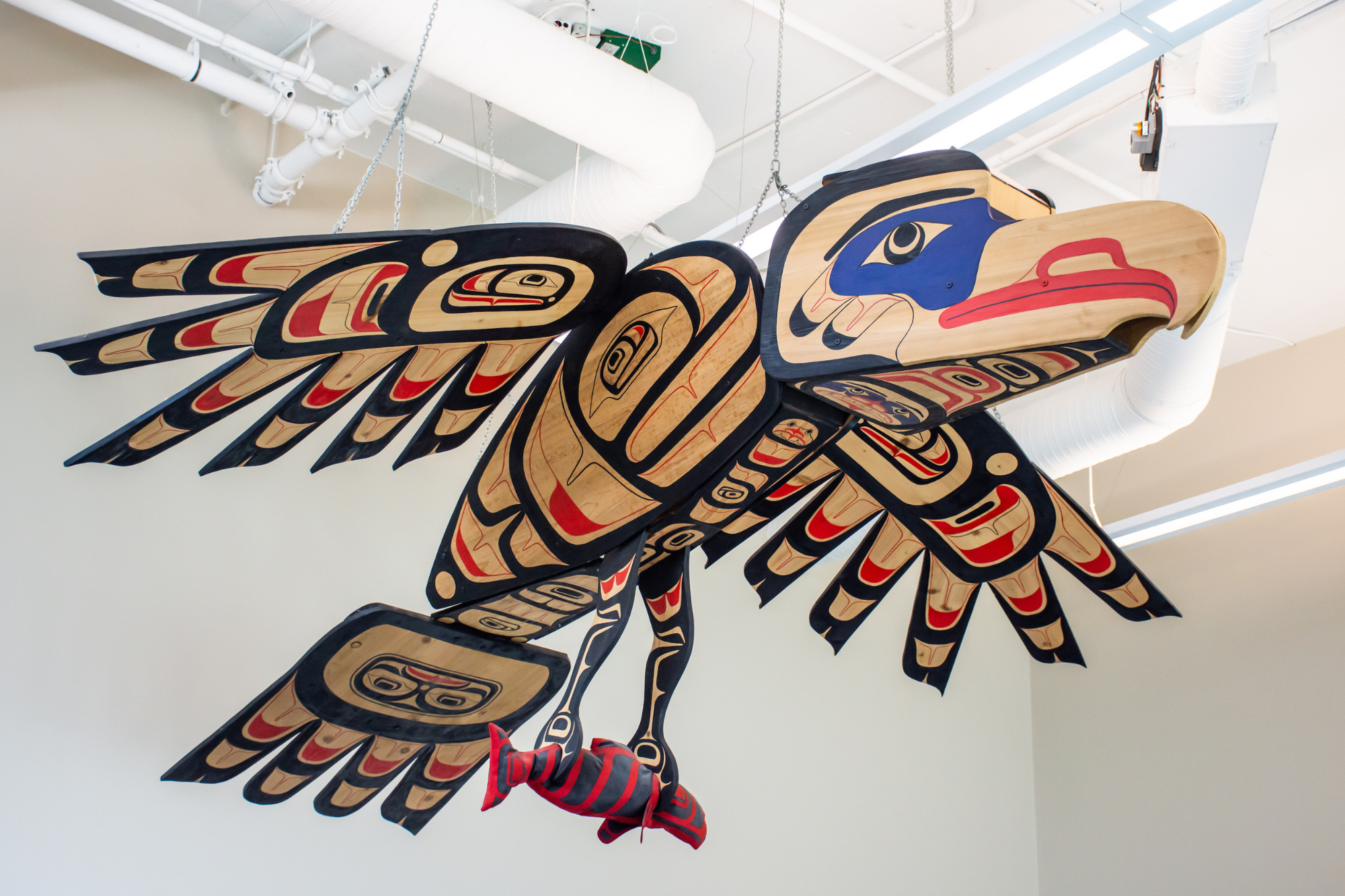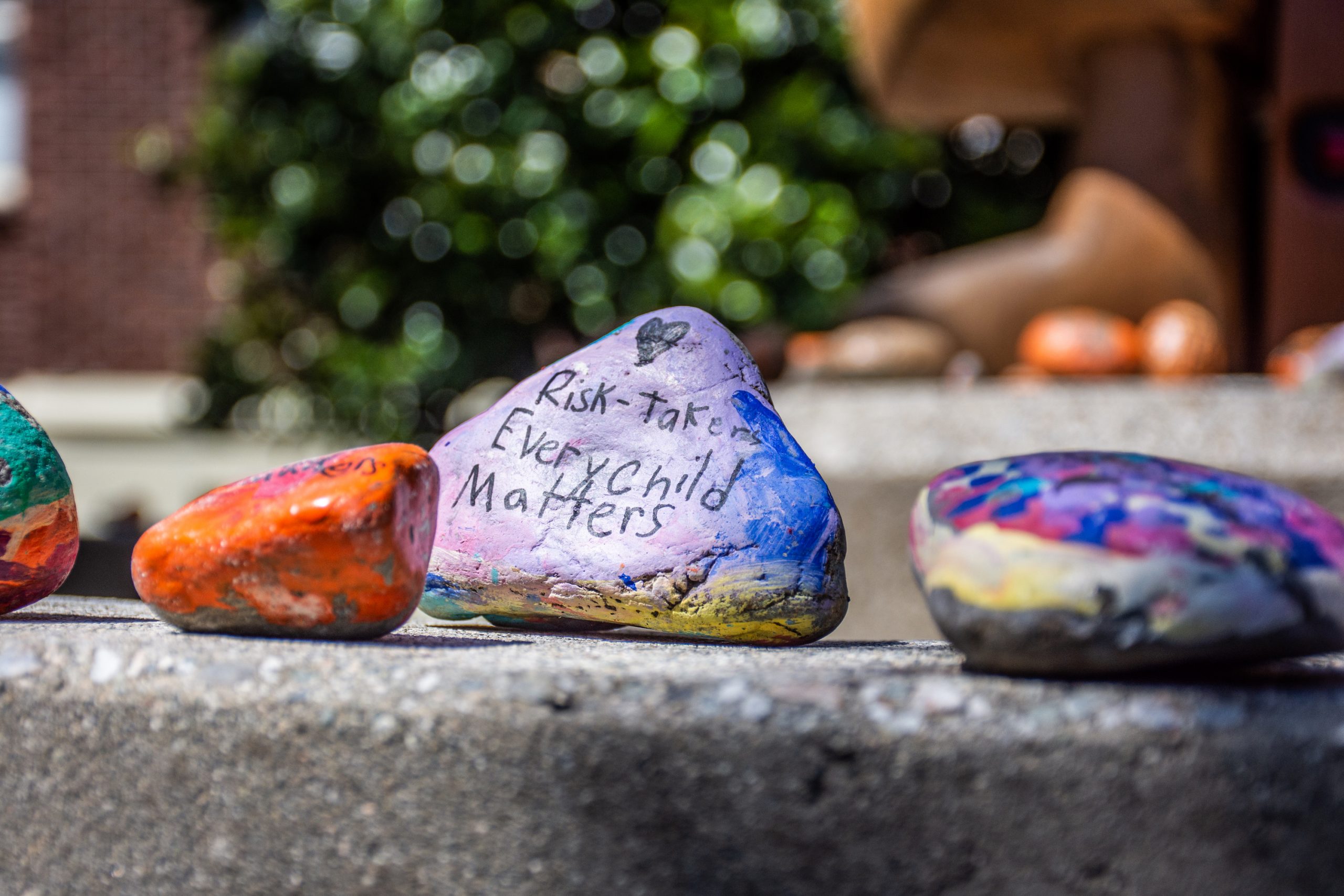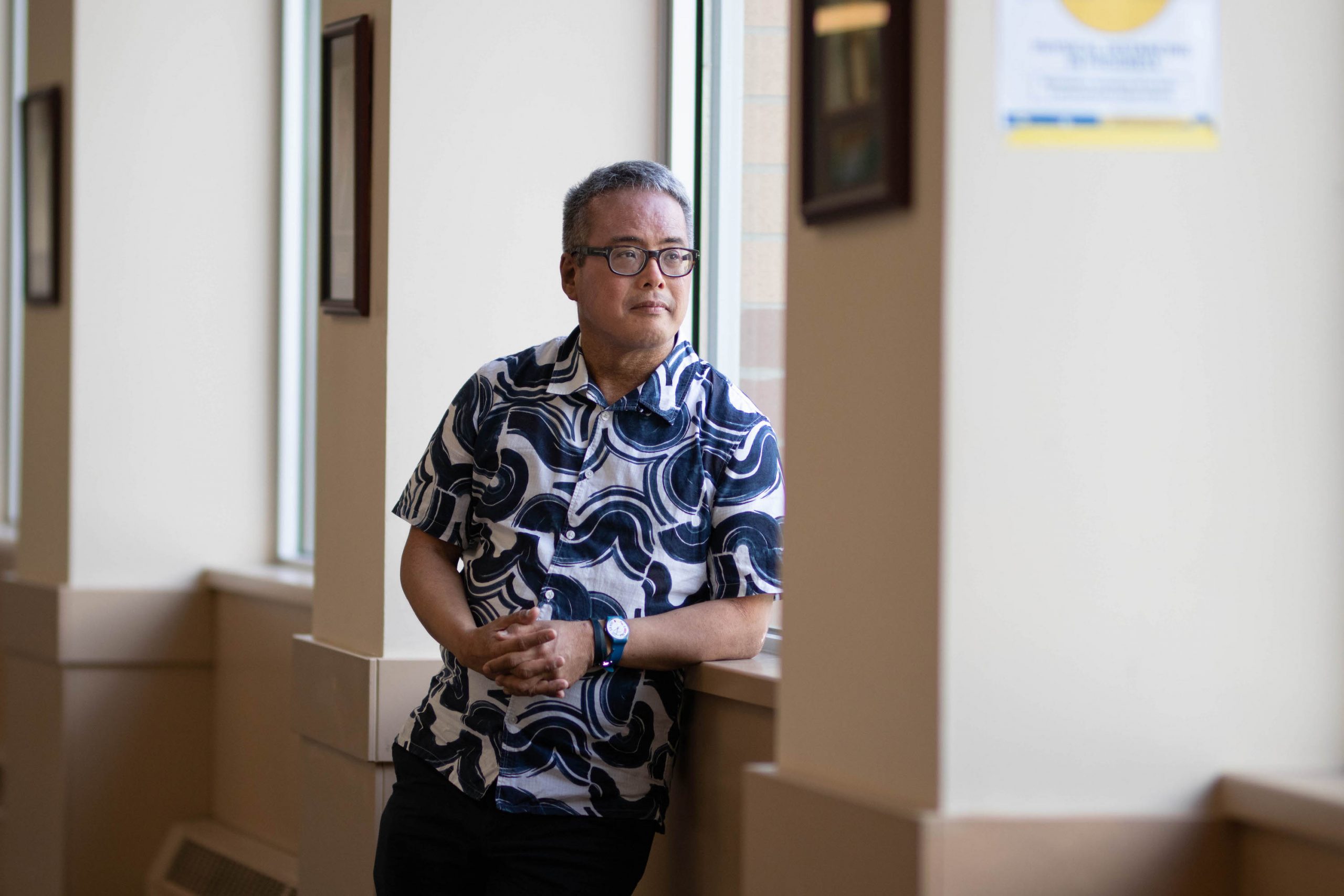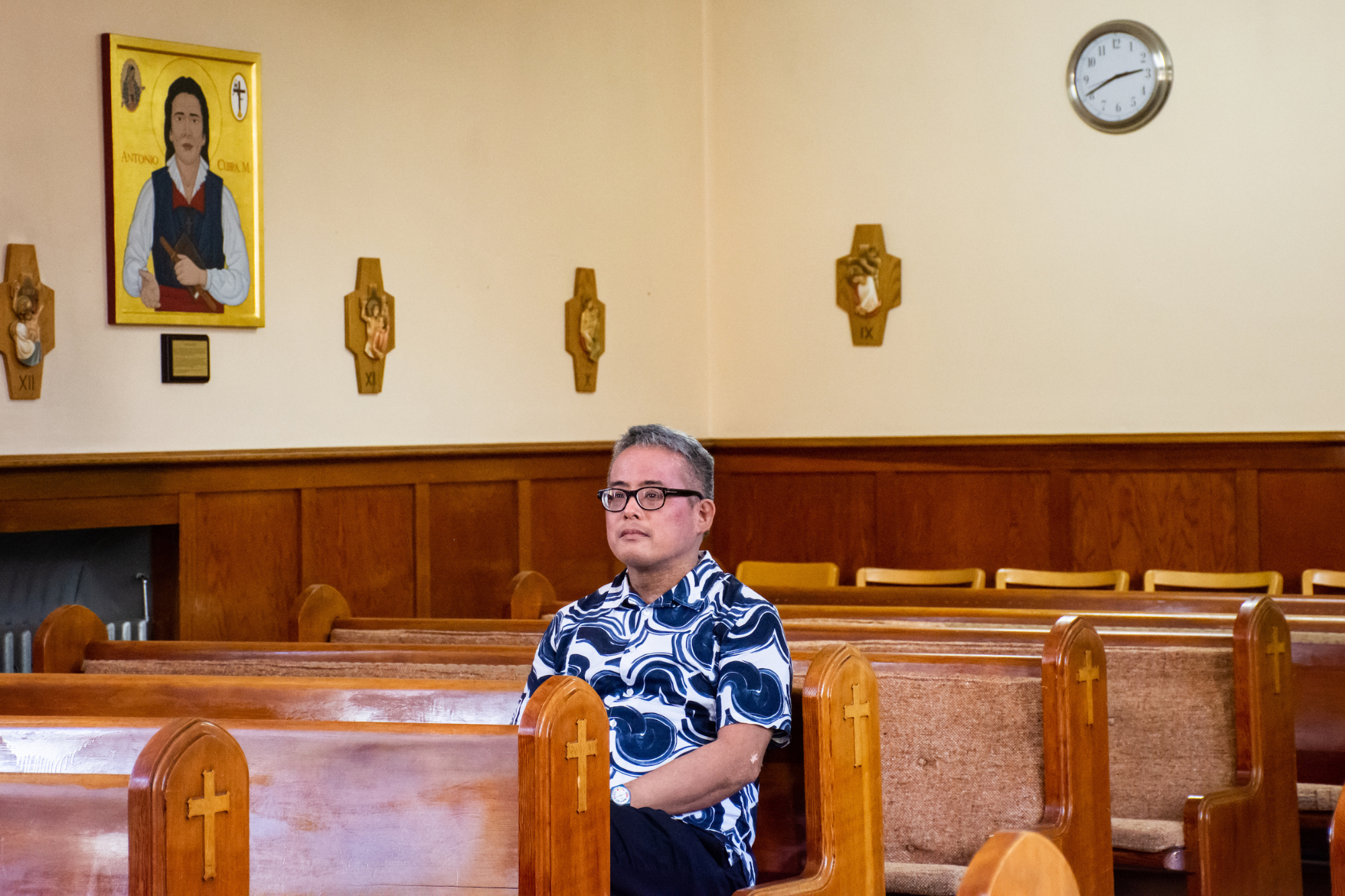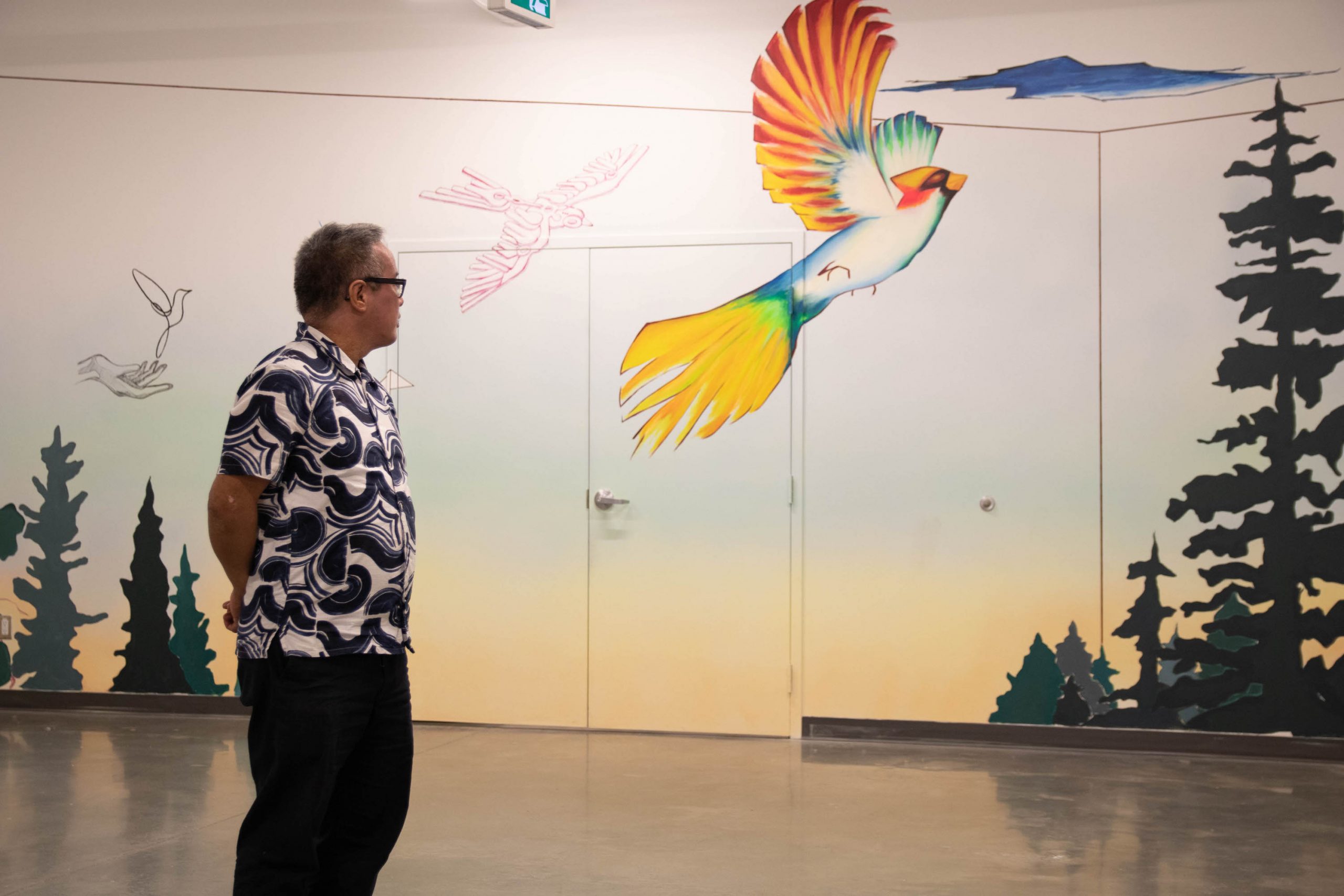
Alumni Feature
Teacher | St. Thomas Aquinas High School
Master of Museum Education, 2019
We arrive at St. Thomas Aquinas Regional Secondary School on a sunny late afternoon in June. The school is brand new, we learn, built in 2020. St. Thomas Aquinas (STA) is an independent Catholic school in North Vancouver, and houses a small chapel on its grounds. The old school remains next door, and is currently a film set for a ‘Grease’ spinoff, ‘The Rise of the Pink Ladies!’ After signing in at the front desk, we meet with John Mendoza, an English teacher here for the past 20 years. John is also a UBC Faculty of Education alumnus, having completed the Master of Museum Education (MMEd) in 2019.
Prior to becoming a teacher, John volunteered at a local craft museum and at Science World to get his teaching experience, so he naturally gravitated to the MMEd program. “It is important for teachers to recognize this as a very valuable program” John says, noting that the MMEd is widely applicable for all educators, not just those working in traditional museum settings.
John says that teachers often overlook field trips as a meaningful learning tool, but the MMEd gave him an appreciation for the nuances and dynamics, and even challenges, that can exist during field trips; it confirmed for him all the learning opportunities that can arise. “There has to be a real initiative from individual teachers to do field trips because it’s not easy,” John notes.
John recalls a memorable field trip in 2014 when he took his students to volunteer for the Holiday Grocery Program with AIDS Vancouver. Many of the students had done some volunteer work before, but this was an atypical opportunity and they seemed to really enjoy the experience. John reflects that there are always unique moments of learning on every field trip, and each one has the possibility of offering students something new to absorb. “We have the freedom and the ability to change our mindset and to look at things differently,” John posits, and that’s what he always aims to achieve on each trip he takes with his students.
“Informal learning is more than just a museum or an art gallery – it’s … a lot of these things that we don’t necessarily consider in the education realm, but … there are so many different ways and approaches to learning that are out there.”
He believes that when teachers recognize the value of pulling from the world of informal learning, they make the field trip experience more effective for students, and can bring that back to the classroom in order to enrich the learning experience. “Informal learning is more than just a museum or an art gallery – it’s a botanical garden, it’s a library, it’s public health programs. It’s a lot of these things that we don’t necessarily consider in the education realm, but when you can take off the blinders and look at it a little more closely, there’s a sense that there are so many different ways and approaches to learning that are out there.”
Going through the MMEd program has given John a broader lens through which to approach his teaching practice, providing him with “a wider, more nuanced perspective, and a more sophisticated view of the world, and why we do certain things in the classroom.” It wasn’t his first time partaking in post-secondary professional development, but John still gained confidence and was proud of his ability to dive back into academia and an intensive university learning environment. “It’s never too late to go back and pursue more education – that was a nice reminder,” he reflects.
As we start our tour of the school, we pass clusters of sparkly balloons stationed throughout the hallways, and John explains that the high school graduation mass took place that morning. Through wide glass windows we see into a large gymnasium, where rows of plastic fold-up chairs are being disassembled. The hallways are mostly deserted, and we only see a handful of students, along with some teachers and administrative staff.
Making our way down the halls, we observe many striking Indigenous-made art pieces displayed throughout the school, including a welcoming pole carved by Squamish artist Latash Nahanee that is placed outside the school front entrance, and a large wooden eagle with a fish in its talons suspended above the student alumni lounge[1].
John explains that the school stands on the site of the only residential school in metro Vancouver – the St. Paul’s Indian Residential School (1898 – 1958)[2]. The school leadership at STA feels strongly about honouring the legacy of the victims and survivors of St. Paul’s residential school, and has dedicated many spaces around the current school to highlight Indigenous-made art and culture, and the painful legacy the school stands on.
An especially moving monument stands at the back of the school, commemorating the residential school survivors. The piece was designed by Jason Nahanee – a survivor of St. Paul’s from the Squamish Nation – and is made up of two larger-than-life red cedar figures standing back-to-back. The figures are positioned on top of a circular concrete base topped with dozens of colourful rocks decorated with handwritten messages of sorrow and remembrance. The base represents ancestors travelling in a canoe, reflecting the ongoing challenges that residential school survivors face on their healing journey[3]. The school states that they use this monument as a learning tool for current students.
We arrive at John’s classroom, where large laminated letters spell out the word “English” along a side wall, and posters are pinned up encouraging a love of literature each way you turn. “Is art essential or not?” a sign on the wall questions – students have attempted their answers and posted their thoughts to the wall, the papers surrounding the central question like a dense storm cloud.
When reflecting on learning from his program that he now incorporates in the classroom, John cites Dr. Jill Baird’s practice of visual journaling, which she introduced in a Museum Methodology course. John was particularly struck by this assignment, and having to represent learning through pictures, visuals and words. John was amazed that this type of learning – involving markers and art supplies – could be used in a university setting. “It reminded [me] of the creativity and fun that can be imbedded in an assignment like this,” John recounts.
“You collapse hierarchies and level the playing field for all when you do an activity like [visual journaling].”
He now uses visual journaling in his own classroom, having expanded on the concept and customized it for his Grade 8 and 10 English classes. He sees the value in this kind of assignment, as opposed to a traditional worksheet for example, as being more accessible and equitable to all students and different kinds of learning. For those skeptical in their artistic abilities, he assures them it is a creative assignment, not an art assignment, and that no skill is required. “You collapse hierarchies and level the playing field for all when you do an activity like this.”
With the funding from this alumni campaign, John purchased art supplies for future visual journals for his students, including pencil crayons, scissors, glue sticks, sharpies and post-it notes. He wanted to ensure that some of his teaching colleagues could benefit from these items too, so he will make the supplies available for the entire English Department to use at STA.
John gets a lot of gratification from teaching, and helping people through education. He is inspired by his students and their ongoing journeys of learning and discovery, and enjoys seeing them push at the boundaries of what they can achieve. “You can’t help but be transformed when you get into a profession like teaching. You’re opening up the possibilities of the world to students, and that’s incredibly rewarding.”
Sources:
[1] The B.C. Catholic. <https://bccatholic.ca/news/catholic-van/first-nations-welcome-pole-tells-students-you-are-family>
[2] St. Thomas Aquinas Regional Secondary School website, STA History. <https://www.aquinas.org/about/sta-history>
[3] Backgrounder, Squamish, Musqueam and Tsleil-Waututh Nations Announce Investigation at Former St. Paul’s Indian Residential School Site, Squamish Nation, published August 2021. Accessed September 2022. <https://www.squamish.net/wp-content/uploads/2021/09/2021-08-09_Backgrounder-1-ABOUT-ST.-PAULS-RESIDENTIAL-SCHOOL-FINAL.pdf>
